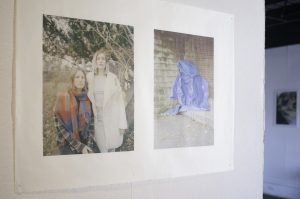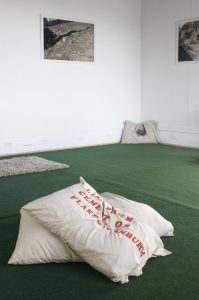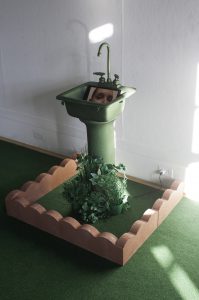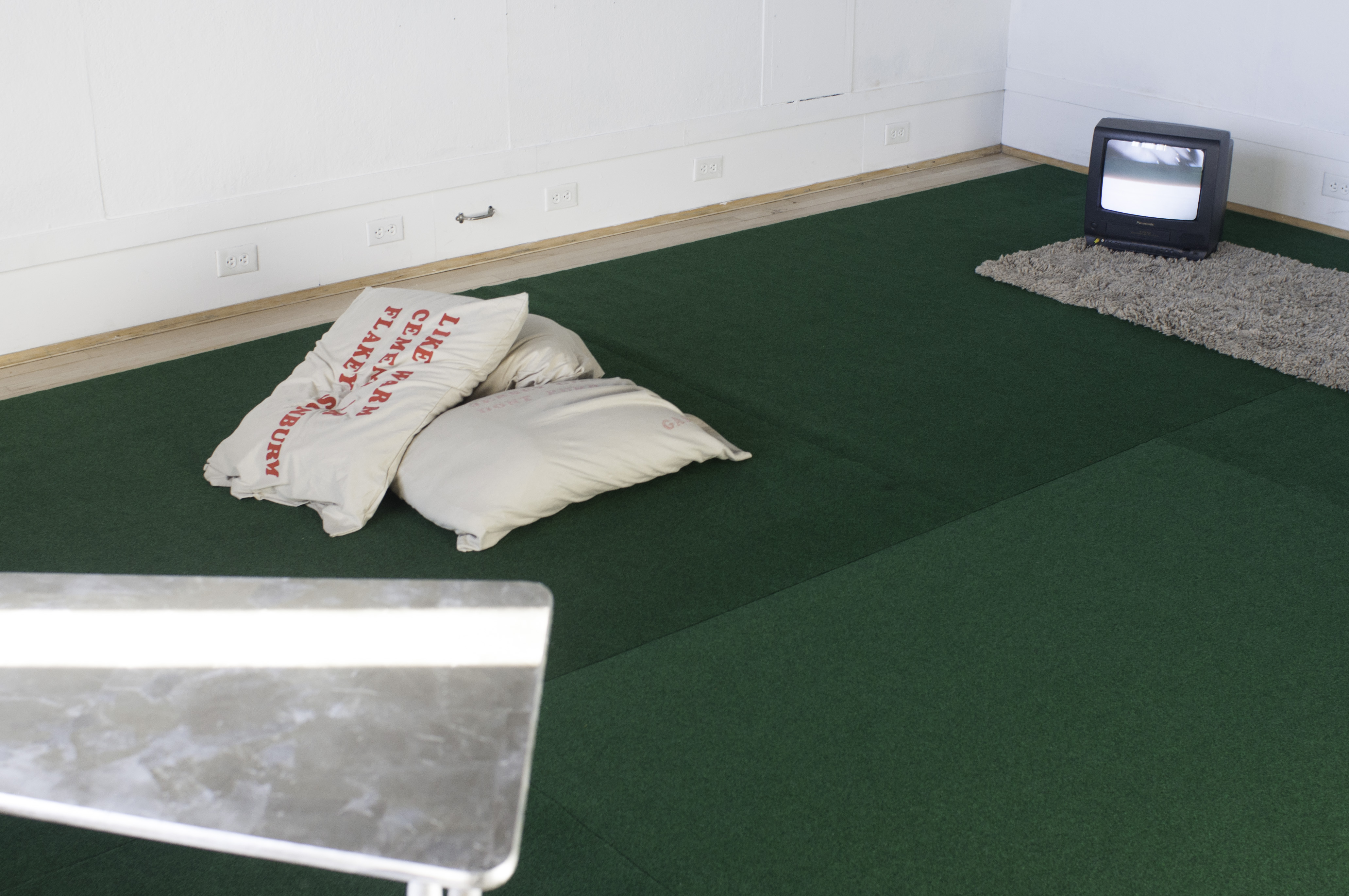Pass the Butter
Jenna Houston (2017)Pass the Butter by Jenna Houston :: Supported by FRFAF from STUDIO for Creative Inquiry on Vimeo.
Pass the Butter was a show in The Ellis Gallery at Carnegie Mellon University November 27, 2017 until December 2, 2017 by Jenna Houston. The show focused on two aspects of identity: queering suburban tropes from Houston’s adolescence into surreal domestic spaces and documenting the lack of a physical queer neighborhood in Pittsburgh through photography. The photographs both focused on LGBTQIA+ individuals and the quieter performances within their homes as opposed to the primary stereotypes mainstream media perpetuates.

Houston had been taking the photographs with medium-format color film since June and used a digital film scanner to reprint the images onto silk and mulberry paper. These photographs informed the creation of a larger body of work including photographic documentation of neighborhoods that are rumored to once have been queer, leaving behind nothing but a myth now. Comparatively, the work on the floor of the gallery emphasized Houston’s personal experiences with suburbia and homogeneity there that focused around a structure with no room for queerness. This more personal exploration included a silver-leafed school desk, a sink with an included video inside of it, pillows with text and photographs on them, and a television and rug installation including a video as well. Houston invited the viewer to draw connections themselves between the individual place of the artist and a more collective depiction.

Within the show, Fertile (Birdbath) used video to examine the futility of fitting within a feminine role while feeling disconnected from a given gender. “You can’t be a lesbian with those nails!” discussed both the need of straight individuals to interrogate queer intimacy as a counter to heterosexuality while effectively countering a critique on acrylic nails, and Houston used further references to domestic space such as a muted beige shag rug and television. Pillows with text blended small moments and memories from being raised in suburban New Jersey with a current image of Houston and how they identify now. Finally, A Silver Bullet connected the cookie-cutter nature of public education while referencing an institution that strongly shapes many young queers and adolescents in general, critiquing how we hold education as a solution instead of reforming this seemingly “magical” fix. This work combined with the photographs begins to allow for a larger understanding of the queer experience in physical space, whether it be suburbia or within cities that have no gay neighborhood.

